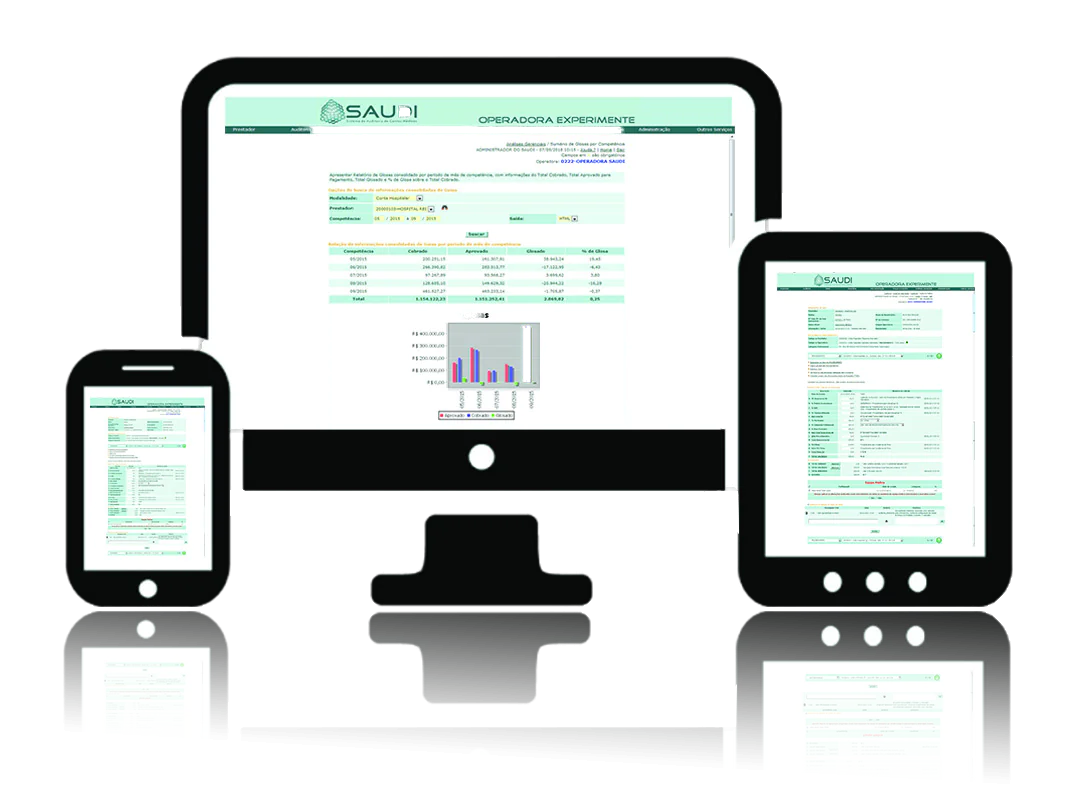In a digital world with diverse technology options for storing data and executing services, being a paperless operator means reducing or eliminating paper in a company goes beyond the issue of sustainability and economy. It is essential for account management. In the health sector, it brings benefits to both institutions, medical professionals and patients.
Saudi, the Medical Bill Audit System, provides this support access the website for more information.
Digitization optimizes everything from the search for information to business procedures. It contributes to better management of actions, facilitates tasks, access to medical records, reduces the number of medical errors, speeds up the exchange of information between institutions and increases employee productivity. Consequently, it generates speed in decision making.
However, investment in Information Technology (IT) represents only 2% in private medical units in the country, according to a survey by Anahp (National Association of Private Hospitals).
In public establishments, it is no different. The 2014 ICT Health survey released by CGI.br (Internet Management Council in Brazil) revealed that 45% of government institutions, even with internet access, still register patients on paper.
The research also shows that there is little investment allocated to the implementation of digital systems. This was observed by 79% of doctors and 78% of nurses, the two main job occupations in medical institutions.
These data reflect that the medical sector in general still uses an old management model with paper records and rooms full of boxes with documents. In this situation alone, there are two problems: the risk of losing data and the administrative sector working more slowly.
Benefits of paperless management
With digitization and the use of software, doctors can access patient information through the computer. This improves the quality of care and also facilitates patient treatment planning.
Through a digital database, it is possible to better view each patient's history, check the tests requested by different professionals, identify those that have already been carried out and even control and avoid errors in indicating the dose of medication.
In this way, it brings greater safety to patients, as it avoids errors such as changing or wrong dosage of medications administered within the institutions, errors due to replacement of medical records and exams, in addition to agility in service.
When it comes to managing healthcare providers and auditing medical bills, the paperless model is also seen as a strategy to improve health institutions' indicators and carry out statistical and qualitative mapping related to medical bill management. See more details about this work on the SAUDI website.
With a more optimized routine, more organization and access to data, it is possible to reduce expenses, reduce bureaucracy in administration, have more productive employees, gain more trust and credibility with patients and make better decisions, including those related to investments within establishments.
Fundamental steps to manage without paper
1 – To enter the digital world, it is important to adopt a progressive deployment model. Collecting historical data, as well as physical documentation and subsequent digitalization, requires a great deal of effort from staff and a drop in motivation.
2 – The second step is to acquire a platform to store all this information in the cloud. Currently, there are several solutions on the market specialized in cloud computing, which guarantee secure storage, including banking data.
Cloud storage also allows digitized files to be viewed at any time and anywhere. Check out the technologies for health plan operators available on the market.
3 – The next step is to create an electronic signature. This measure reduces signing time for approval of contracts, overtime declarations, tax documents and technical reports. Signing a contract or releasing a document that could take several days can be done with a digital signature in seconds.
Just ensure digital certification of the signature. According to provisional measure 2,200/01, to be considered legitimate and valid, the scanned document must have its authenticity assured by a certified digital signature.
4 – Finally, one of the most important tasks: investing in training to carry out a cultural change in all departments of the organization. The migration to the digital environment goes beyond trained professionals in the area of Information Technology.
It is necessary for employees to understand all the advantages and benefits mentioned to ensure the smooth functioning of everyone's work.
One tip is to provide courses, lectures and internal marketing actions to help employees understand the importance of adhering to digitalization and data integration in medical institutions.
Difficulties and solutions in implementing paperless management
The biggest challenges are precisely linked to cultural issues for the adoption of digital technologies. Many people are afraid of security and leakage of confidential information.
However, the 2014 ICT Health survey showed that 72% of doctors and 76% of nurses in the public network noticed an improvement in the quality of treatment.
Other statistics prove the improvement that impacts everything from the management of medical bills and healthcare providers to patients:
– According to the Gartner Group in partnership with international institutions, 90% of a company's information is in documents.
There is a loss of 2% to 5% of files due to being stored incorrectly.
– Professionals waste an average of 4 hours per week signing papers.
– On average, employees spend 400 hours per year searching for paper documents. Only 10% of the documents are easily found on the first search attempt.
– According to the Ministry of Planning, the costs of maintaining appropriate document storage facilities in 13 ministries is R$ 466 million per year.
– Even the sale of printers has felt the impact of these changes. In Brazil, sales fell by 13.7% in 2015. In the following year, the drop was even greater, at 29%.
This data confirms the change in behavior and habits among companies in different segments that understand the need to reduce or even end the consumption of paper and printing.
You can't close your eyes to this reality. It is an assertive issue to achieve savings, sustainability and improvement in data management. The results are in line with the proposals of institutions that value financial health, quality of care and are concerned with an effective model for managing medical bills and managing healthcare providers.
Did you like this content? Now how about getting to know SAUDI better, a complete modular solution to help manage your operator! With the GED module of the SAUDI system All documents are just a “mouse click” away throughout the entire process, providing great speed and security for the management team and auditors.









